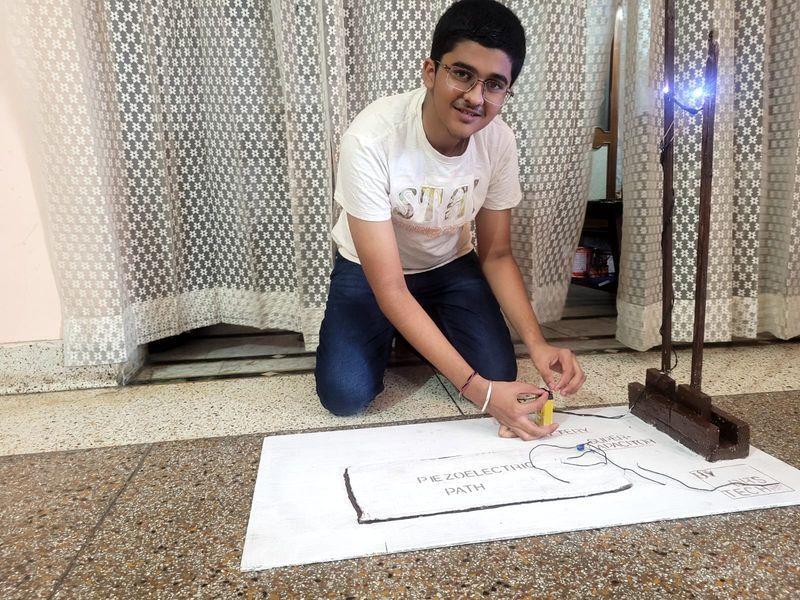
Hoshiarpur Student Builds Device to Generate Power from Footsteps
In a groundbreaking innovation, a student from Hoshiarpur, Punjab, has developed a device that can harness energy from the simplest of human actions – walking. Sanchit, a Class 8 student, has created a science project called “Power beneath our feet” that uses piezoelectric technology to convert footsteps into electricity. This remarkable achievement has caught the attention of local officers, scientists, and enthusiasts alike.
The device, which weighs around 100 grams, consists of a small sensor that is attached to the sole of the shoe. The sensor is made of a piezoelectric material that generates an electric charge when subjected to pressure or vibrations. When a person walks, the sensor detects the pressure and converts it into electrical energy, which is then stored in a small battery.
The innovative project was showcased by Sanchit at a science exhibition in Hoshiarpur, where it drew a huge crowd of curious onlookers. The device is capable of generating around 1-2 volts of electricity, which is enough to power small devices such as LED lights, calculators, or even mobile phones.
Sanchit’s project has sparked a lot of interest among local authorities and experts, who see immense potential in this technology. “This is a brilliant idea that can have far-reaching implications,” said Dr. Amarjeet Singh, a physics professor at Guru Nanak Dev University. “Imagine if we could harness the energy generated by footsteps in buildings, roads, or even public spaces. It could significantly reduce our reliance on traditional power sources and help combat climate change.”
The concept of harnessing energy from footsteps is not new, but Sanchit’s device is a significant improvement over previous attempts. “Previous devices used to generate electricity from footsteps were bulky and impractical,” said Sanchit’s teacher, Mr. Rajinder Kumar. “Sanchit’s device is tiny and user-friendly, making it a game-changer in the field of renewable energy.”
Sanchit’s inspiration for the project came from his daily walks to school. “I used to think about how we waste so much energy walking around every day,” he said. “I wanted to find a way to harness that energy and make it useful.” He spent several months researching and experimenting with different materials and designs before finalizing his project.
The potential applications of Sanchit’s device are vast. It could be used in areas where traditional power sources are unreliable or non-existent, such as rural villages or disaster-stricken zones. It could also be integrated into buildings and public spaces to generate electricity and reduce energy consumption.
As news of Sanchit’s innovation spreads, it is likely to inspire a new generation of young engineers and scientists to think creatively about solving real-world problems. Sanchit’s project is a shining example of how a simple idea can have a significant impact on the world.






